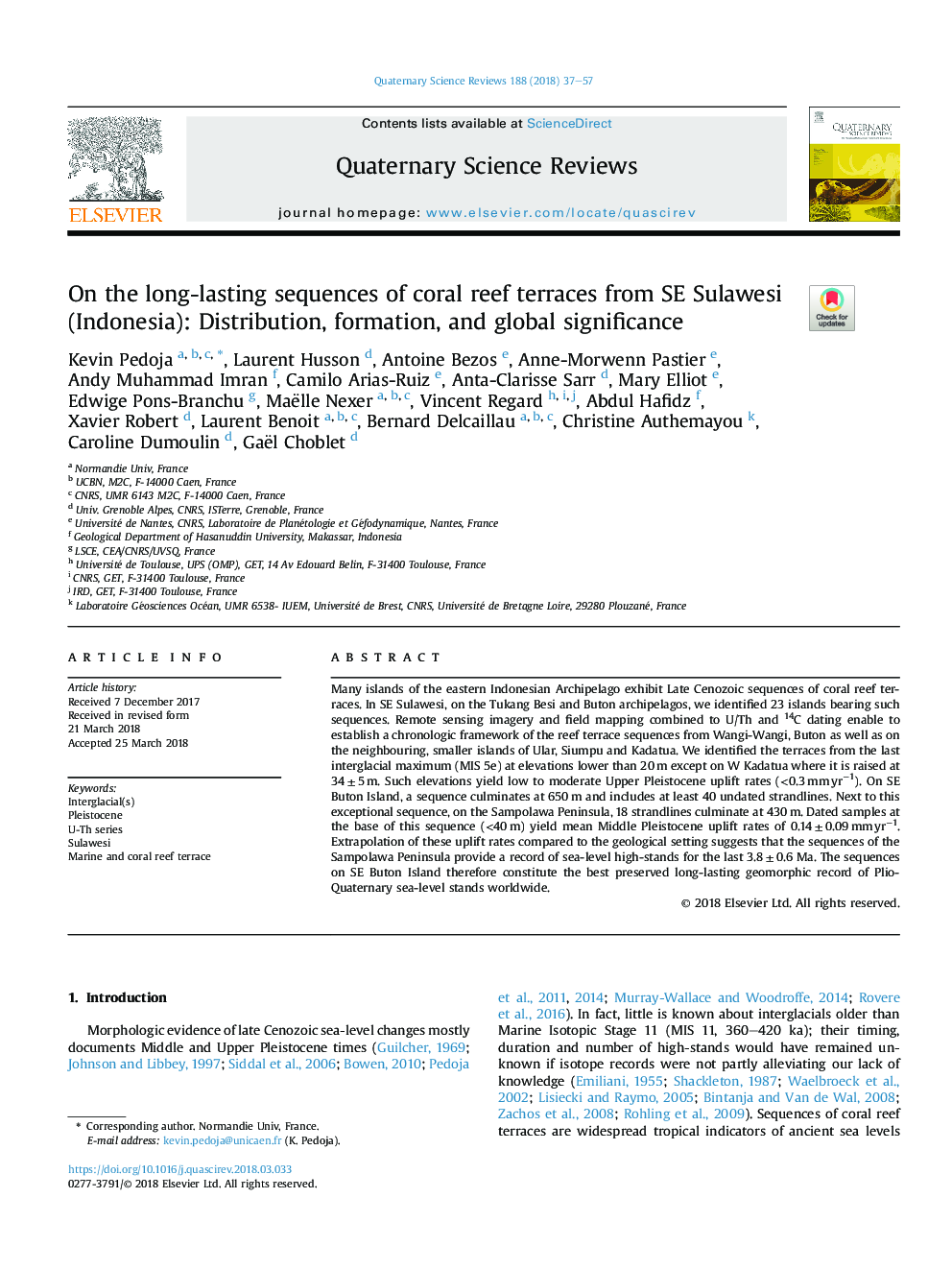| Article ID | Journal | Published Year | Pages | File Type |
|---|---|---|---|---|
| 8914837 | Quaternary Science Reviews | 2018 | 21 Pages |
Abstract
Many islands of the eastern Indonesian Archipelago exhibit Late Cenozoic sequences of coral reef terraces. In SE Sulawesi, on the Tukang Besi and Buton archipelagos, we identified 23 islands bearing such sequences. Remote sensing imagery and field mapping combined to U/Th and 14C dating enable to establish a chronologic framework of the reef terrace sequences from Wangi-Wangi, Buton as well as on the neighbouring, smaller islands of Ular, Siumpu and Kadatua. We identified the terraces from the last interglacial maximum (MIS 5e) at elevations lower than 20â¯m except on W Kadatua where it is raised at 34â¯Â±â¯5â¯m. Such elevations yield low to moderate Upper Pleistocene uplift rates (<0.3â¯mmâ¯yrâ1). On SE Buton Island, a sequence culminates at 650â¯m and includes at least 40 undated strandlines. Next to this exceptional sequence, on the Sampolawa Peninsula, 18 strandlines culminate at 430â¯m. Dated samples at the base of this sequence (<40â¯m) yield mean Middle Pleistocene uplift rates of 0.14â¯Â±â¯0.09â¯mmâ¯yrâ1. Extrapolation of these uplift rates compared to the geological setting suggests that the sequences of the Sampolawa Peninsula provide a record of sea-level high-stands for the last 3.8â¯Â±â¯0.6 Ma. The sequences on SE Buton Island therefore constitute the best preserved long-lasting geomorphic record of Plio-Quaternary sea-level stands worldwide.
Keywords
Related Topics
Physical Sciences and Engineering
Earth and Planetary Sciences
Geology
Authors
Kevin Pedoja, Laurent Husson, Antoine Bezos, Anne-Morwenn Pastier, Andy Muhammad Imran, Camilo Arias-Ruiz, Anta-Clarisse Sarr, Mary Elliot, Edwige Pons-Branchu, Maëlle Nexer, Vincent Regard, Abdul Hafidz, Xavier Robert, Laurent Benoit,
